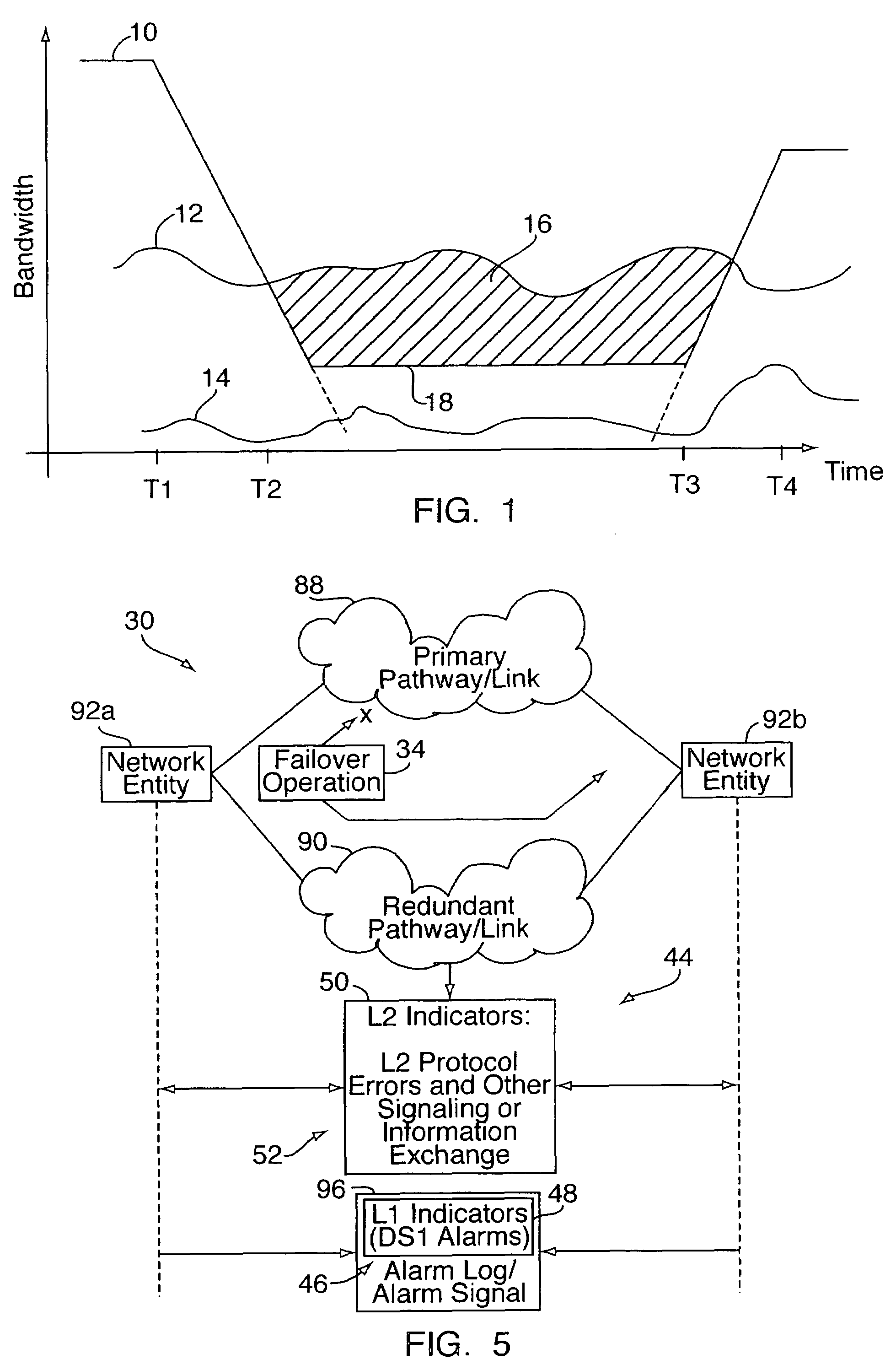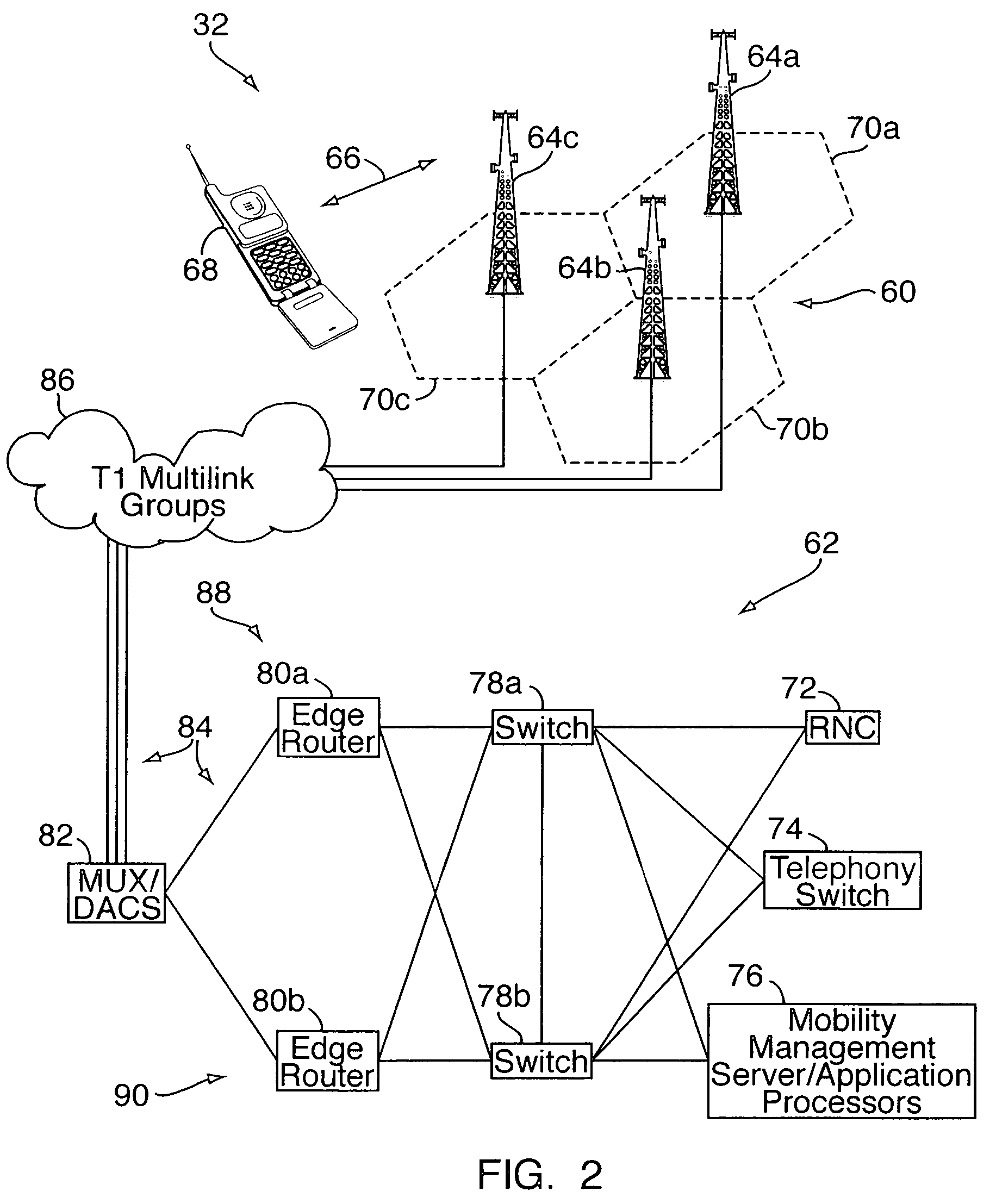Method of maintaining traffic services through congestion caused by network failovers
a traffic service and network failover technology, applied in the field of communication systems, can solve problems such as network congestion, drop calls, and congestion in forwarding data packets over that hop, and achieve the effect of accurately determining whether a failover operation is necessary
- Summary
- Abstract
- Description
- Claims
- Application Information
AI Technical Summary
Benefits of technology
Problems solved by technology
Method used
Image
Examples
Embodiment Construction
[0016]With reference to FIGS. 2-5, the present invention relates to a system and method 30 for controlling data traffic in a communication network 32, to maintain traffic services through congestion caused by network failovers 34. First and second hardware / software agents 36a, 36b are deployed to interface with one or more network entities 38. The first agent 36a monitors the L1 (physical) layer 40 of the network 32, and the second agent 36b monitors the L2 (data link) layer 42 of the network 32. The L1 and L2 layers 40, 42 are monitored for the presence of indicators 44 associated with failover operations 34 in the network 32. For example, one agent 36a may monitor the L1 layer 40 for DS1 alarms 46 or other L1 failover indicators 48. The second agent 36b may monitor the L2 layer 42 for L2 failover indicators 50 including protocol errors and / or information and signaling exchanges 52 associated with failover operations. (Generally speaking, the indicators 48, 50 are operational indic...
PUM
 Login to View More
Login to View More Abstract
Description
Claims
Application Information
 Login to View More
Login to View More - R&D
- Intellectual Property
- Life Sciences
- Materials
- Tech Scout
- Unparalleled Data Quality
- Higher Quality Content
- 60% Fewer Hallucinations
Browse by: Latest US Patents, China's latest patents, Technical Efficacy Thesaurus, Application Domain, Technology Topic, Popular Technical Reports.
© 2025 PatSnap. All rights reserved.Legal|Privacy policy|Modern Slavery Act Transparency Statement|Sitemap|About US| Contact US: help@patsnap.com



